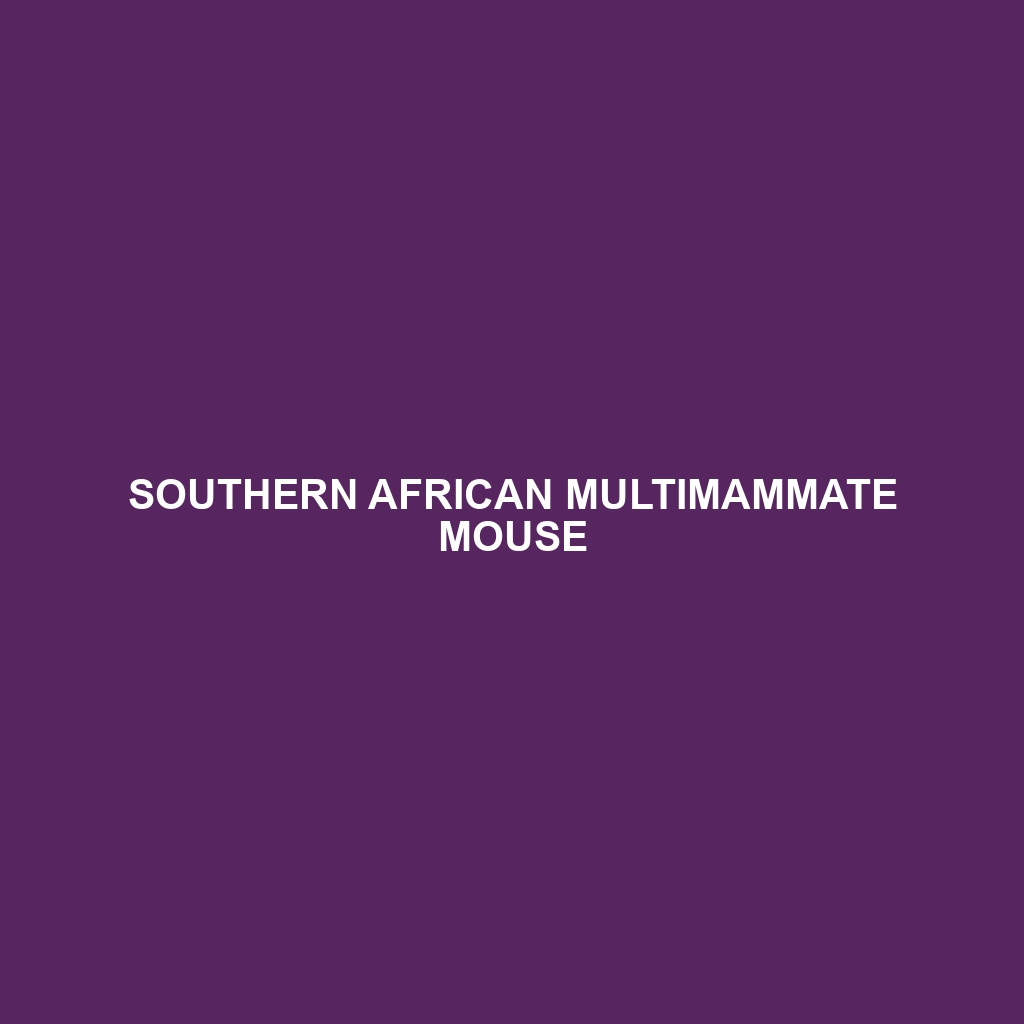Southern African Multimammate Mouse
Common Name: Southern African Multimammate Mouse
Scientific Name: Mastomys natalensis
Habitat
The Southern African Multimammate Mouse is primarily found in a variety of habitats across southern Africa, including grasslands, savannas, and scrublands. Its range extends to countries such as South Africa, Namibia, Botswana, Zimbabwe, and parts of Mozambique. This adaptable species thrives in both rural and urban environments, often inhabiting fields and agricultural areas, where it can take advantage of abundant food sources.
Physical Characteristics
This small rodent measures approximately 8 to 12 cm in body length, with an additional tail length of 8 to 10 cm. The Southern African Multimammate Mouse features a soft, dense coat that can vary in color from light brown to gray, with white underparts. Notable physical characteristics include large ears, a pointed snout, and multiple teats—hence the name “multimammate.” Its slender body and agile limbs make it adept at navigating through grasses and brush.
Behavior
The Southern African Multimammate Mouse exhibits nocturnal behavior, being most active during the night. These mice are known for their social structure, often living in small groups. They communicate using various vocalizations, and are skilled burrowers, creating extensive tunnel systems. Their agility and quick movements help them evade predators, while their ability to establish burrows provides refuge from the environment.
Diet
As an omnivorous species, the Southern African Multimammate Mouse primarily feeds on seeds, grains, fruits, and insects. They are particularly fond of cultivated crops, which can sometimes lead to conflicts with agricultural activities. Their varied diet allows them to adapt to different food availabilities throughout the year, making them resilient to changes in their environment.
Reproduction
The breeding season of the Southern African Multimammate Mouse occurs primarily during the warmer months, resulting in multiple litters each year. Females typically produce between 3 to 12 offspring per litter after a gestation period of about 20 days. The young are altricial at birth, relying on their mother’s milk until they are weaned. Parental care is crucial during the early stages of development, as the mother provides shelter and protection.
Conservation Status
Currently, the Southern African Multimammate Mouse is classified as Least Concern by the IUCN, indicating that it is not facing any immediate threats to its population. However, habitat loss and agricultural expansion could pose future risks.
Interesting Facts
1. The Southern African Multimammate Mouse has been used in scientific research due to its ability to breed quickly and adapt to various environments.
2. This species has demonstrated surprising resilience to environmental changes, making it an interesting subject for studies on evolution and adaptation.
Role in Ecosystem
The Southern African Multimammate Mouse plays a crucial role in its ecosystem by acting as both a prey and a seed disperser. Its feeding habits contribute to seed germination and growth, while its presence provides sustenance for various predators, including birds of prey, snakes, and small mammals. Their burrowing activities also aerate the soil, promoting healthy plant growth in their habitats.
